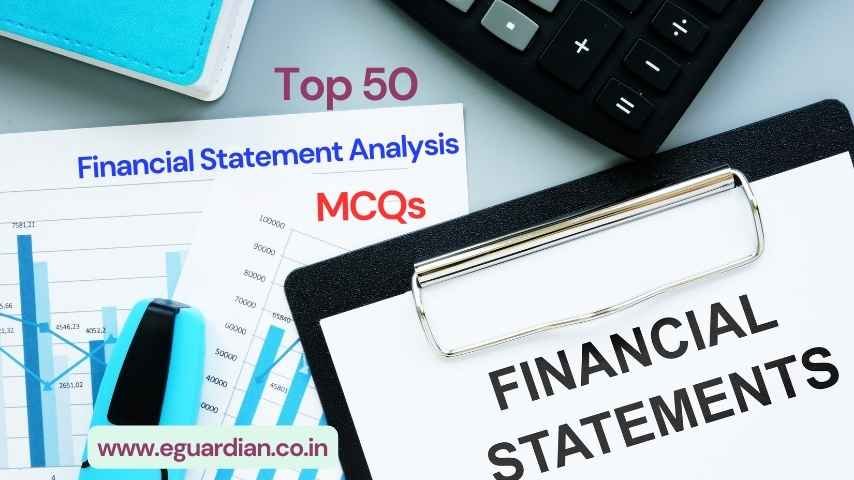Multiple Choice Questions and Answers on Financial Management for the preparation of MBA, BBA, Mcom, Bcom, Banking & Finance Exams.

Multiple Choice Questions and Answers on Financial Management
1. What has changed the profile of Indian finance managers?
Ana. Effective utilisation
2. Finance management is considered a branch of knowledge with a focus on the ___.
Ana. Liberalisation and globalisation of the Indian economy
3. Under perfect competition, allocation of resources shall be based on the goal of ___.
Ana. Procurement of funds
4. ___ is based on cash flows.
Ana. Profit maximisation.
5. ___ consider rime value of money.
Ana. Wealth maximisation
6. What are the main goals of financial management?
Ana. Wealth maximisation
7. ___ lead to investment in real assets.
Ana. Investment decisions.
8. ___ relate to the acquisition of funds at the least cost.
Ana. Financing decisions
9. Formulation of inventory policy is an important element of ___.
Ana. Liquidity
10. Obtaining finance is an important function of ___.
Ana. Treasurers
11. What are the two critical issues to be considered under-investment decisions?
Ana. The two critical issues are –
• evaluation of expected profitability of the new investment
• rate of return required on the project
12. Define the rate of return.
Ana. Rate of return is normally defined as the hurdle rate or cut-off rate or opportunity cost of the capital
13. The most important decision made by a finance manager is ___.
Ana. Dividend decision
14. Corporate objectives could be group into ___ and ___.
Ans. Qualitative, Quantitative
15. Control mechanism is developed for ___ and their effective use.
Ans. Allocation of funds
16. Seasonal peak requirements to be met from ___ from banks.
Ans. Short term borrowings
17. ___ has a major impact on the total assets that the firm owns.
Ans. Nature of the industry
18. Sources of finance could be grouped into ___ and ___.
Ans. Debt, Equity
19. ___ of any good financial plan is to match the term of the source with the term of the investment.
Ans. The product policy
20. ___ refers to the ability to ___ whenever needed.
Ans. Flexibility in capital structure, effect changes in the composites of capital structure
21. Capital requirement of a firm could be grouped into ___ and ___.
Ans. Fixed capital, working capital
22. Variable working capital will have to be financed only by ___.
Ans. Short term sources
23. ___ of a firm refers to the composition of its long – term funds.
Ans. Capitalisation
24. Two theories of capitalisation for new companies are ___ and earnings theory.
Ans. Cost theory
25. A company is said to be ___ when its total capital exceeds the true value of its assets.
Ans. Over-capitalised
26. A company is considered to be ___ when its actual capitalisation is lower than its proper capitalisation as warranted by its earning capacity.
Ans. Under-capitalised
27. The important factors contributing to the time value of money are ___, ___ and ___.
Ans. Investment opportunities, preference for consumption, risk
28. During periods of inflation, a rupee has a ___than a rupee in future.
Ans. Higher purchasing power
29. As the future is characterised by uncertainty, individuals prefer ___ consumption to ___ consumption.
Ans. Current and future
30. There are two methods by which the time value of money can be calculated by ___ and ___ techniques.
Ans. Compounding and discounting
31. ___ is created out of fixed payments each period to accumulate for a future sum after a specified period.
Ans. Sinking fund
32. The ___ of a future cash flow is the amount of the current cash that is equivalent to the investor.
Ans. Present Value
33. An annuity for an infinite time period is called ___.
Ans. Perpetuity
34. The reciprocal of the present value annuity factor is called ___.
Ans. Capital Recovery Factor
35. ___ is the minimum value the company accepts if it sold its business.
Ans. Liquidation value
36. ___ per share is generally higher than the book value per share for profitable and growing firms.
Ans. Market value
37. Bonds issued by ___ are secured and those issued by private sector companies may be ___ or ___.
Ans. Government agencies, secured or unsecured
38. ___ is the rate earned by an investor who purchases a bond and holds it till its maturity.
Ans. Yield to Maturity
39. When Kd is lesser than the coupon rate, the value of the bond is ___ than its face value.
Ans. Greater
40. ___of a share is associated with the earnings (past) and profitability (future) of the company, dividends paid and expected and future definite prospects of the company.
Ans. Intrinsic value
41. The ___ is the net worth of the company divided by the number of outstanding equity shares.
Ans. Book value per share (BVPS)
42. ___ is the mix of long-term sources of funds like debentures, loans, preference shares, equity shares and retained earnings in different ratios.
Ans. Capital structure
43. The capital structure of the company should generate ___ to the shareholders.
Ans. Maximum returns
44. The capital structure of the company should be within the ___.
Ans. Debt capacity
45. An ideal capital structure should involve ___ to the company.
Ans. Minimum risk of loss of control
46. ___ do not have a fixed rate of return on their investment.
Ans. Equity shareholders
47. According to the dividend forecast approach, the intrinsic value of an equity share is the sum of ___ associated with it.
Ans. Present values of dividends
48. ___ arises due to the presence of fixed operating expenses in the firm’s income flows
Ans. Operating leverage
49. EBIT is calculated as ___.
Ans. Q(S—V)—F
50. Higher operating risks can be taken when ___ of companies are rising.
Ans. Income levels
51. Dividend on ___ is a fixed charge.
Ans. Preference shares
52. Financial leverage is also referred to as ___.
Ans. Trading on Equity
53. Operating leverage is categorised into ___, ___ and ___.
Ans. Fixed costs, variable costs and semi-variable costs.
54. The three types of leverage a company faces are ___, ___ and ___.
Ans. Operating leverage, financial leverage and combined leverage.
55. Financing decisions are ___ and have no impact on the ___ of the firm.
Ans. Investment decisions, operating earnings
56. The value of the firm is dependent on its ___ and the ___.
Ans. Expected future earnings, required rate of return
57. ___ and ___ are two important sources of long-term sources of finance of a firm.
Ans. Equity debt
58. As the ratio of debt to equity increases, the ___ declines and ___ of the firm increases.
Ans. WACC, market value
59. As per the NOI approach the ___ remains constant for all degrees of leverage.
Ans. Overall capitalisation rate
60. ___ is the process of buying a security at a lower in one market and selling it in another market at a higher price bringing about ___.
Ans. Arbitrage, equilibrium
61. The criticisms over Miller and Modigliani approach are ___, ___, ___, ___, ___.
Ans. Risk perception, convenience, transaction costs, taxes and Agency costs.
62. Define Arbitrage.
Ans. Arbitrage is the process of buying a security at a lower price in one market and selling it in another market at a higher price bringing about equilibrium. Thus arbitrage process is a balancing act.
63. The features of an ideal capital structure are ___, ___, ___, ___.
Ans. Profitability, flexibility, control and solvency.
64. The Miller and Modigliani approach fails to explain ___ decisions and ___ value.
Ans. Financing, firms’
65. ___ make or mar a business.
Ans. Capital budgeting
66. ___ decisions involve a large outlay of funds in anticipation of cash inflows in future.
Ans. Capital budgeting
67. Social, political, economical and technological forces make capital budgeting decisions ___.
Ans. Highly complex
68. ___ are very expensive.
Ans. Capital budgeting decisions
69. Capital expenditure decisions are ___.
Ans. Irreversible
70. Forecasting of future operating cash flows from ___ because the future is___.
Ans. Uncertainty, highly uncertain.
71. Post-completion audit is ___ in the phases of capital budgeting decisions.
Ans. Final step
72. Identification of investment opportunities is the ___ in the phases of capital budgeting decisions.
Ans. First step
73. Analysing the demand and supply conditions of the market for the company’s products could be ___ of the potential investment proposal.
Ans. A fertile source
74. Generation of ideas for capital budgets and screening the same can be considered ___ of capital budgetary decisions.
Ans. The most crucial phase
75. ___ decisions could be grouped into two categories.
Ans. Capital budgeting
- Financial Management MCQs with Answers: Set-1
- Financial Management Multiple Choice Questions in pdf: Set-2
Thanks for your visit, if you like the post on Multiple Choice Questions and Answers on Financial Management please don’t forget to share on social media.



